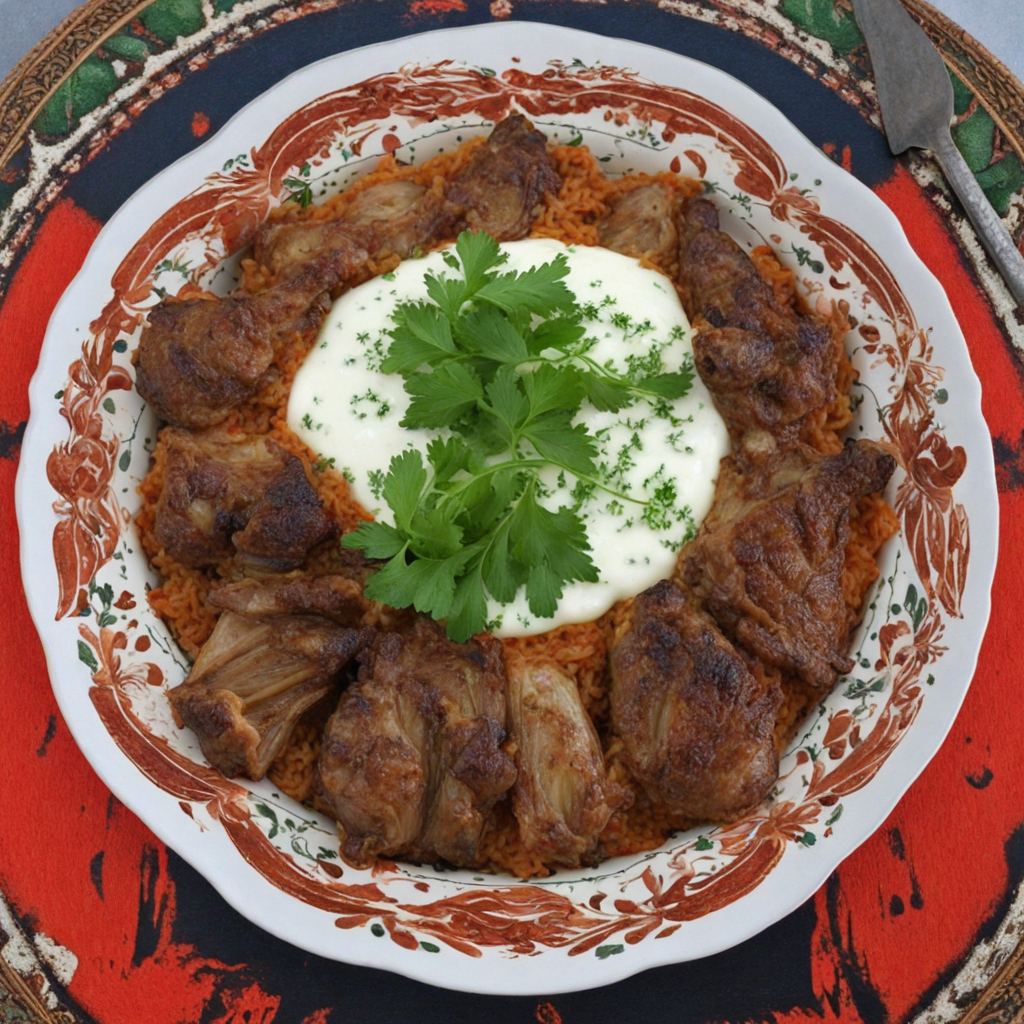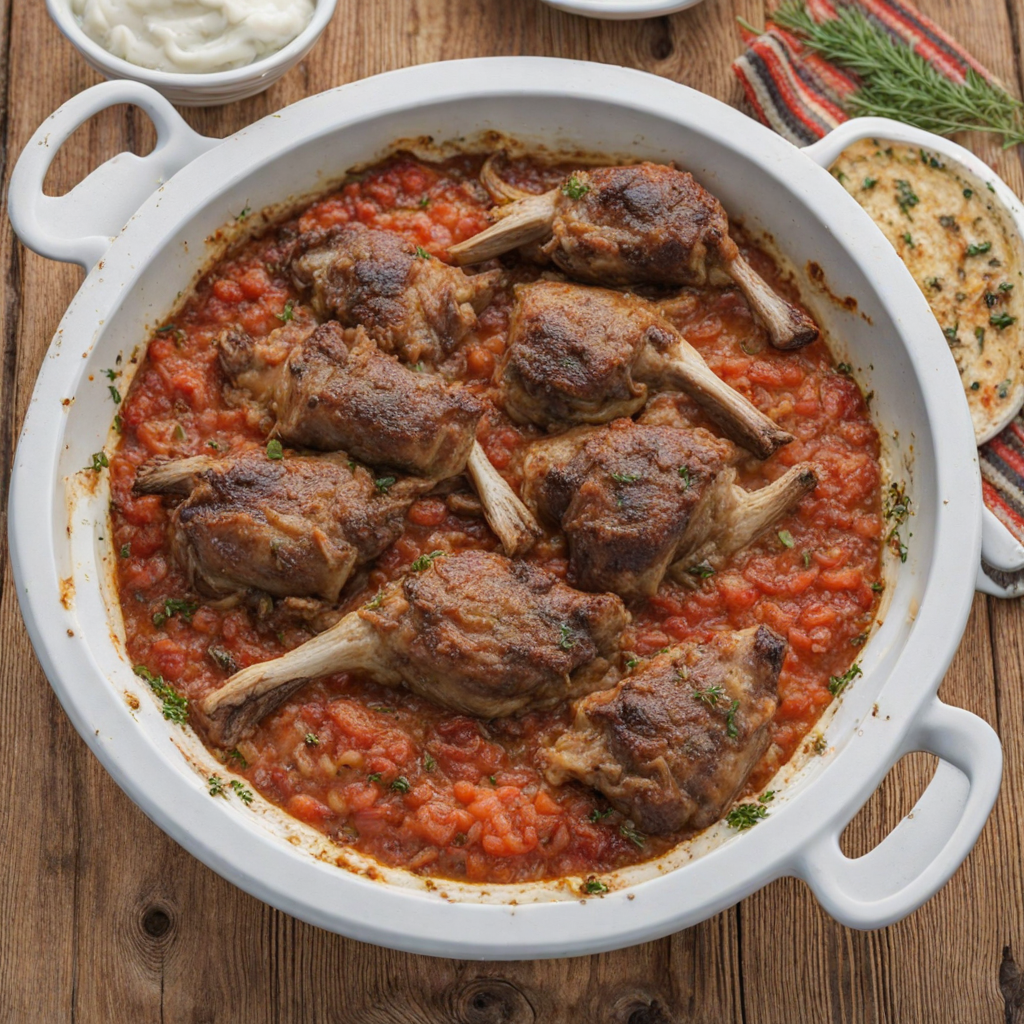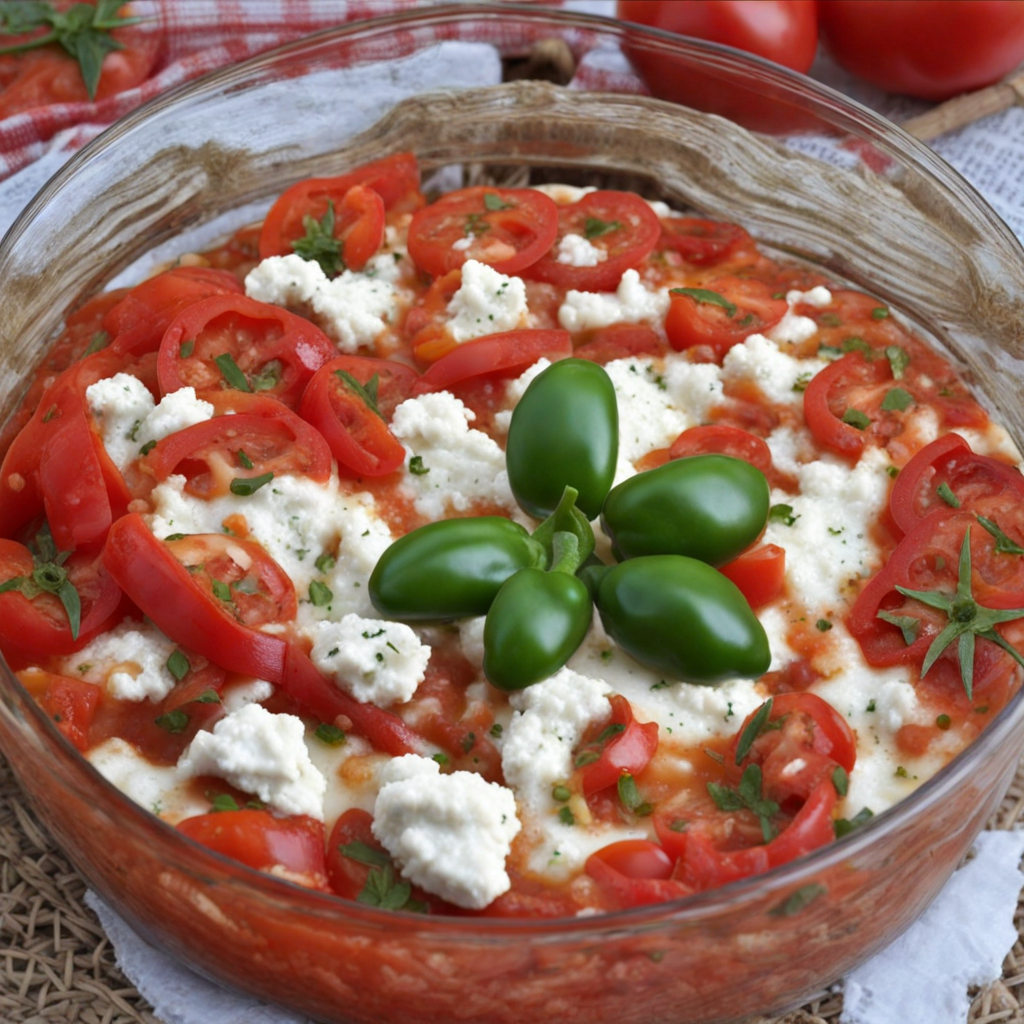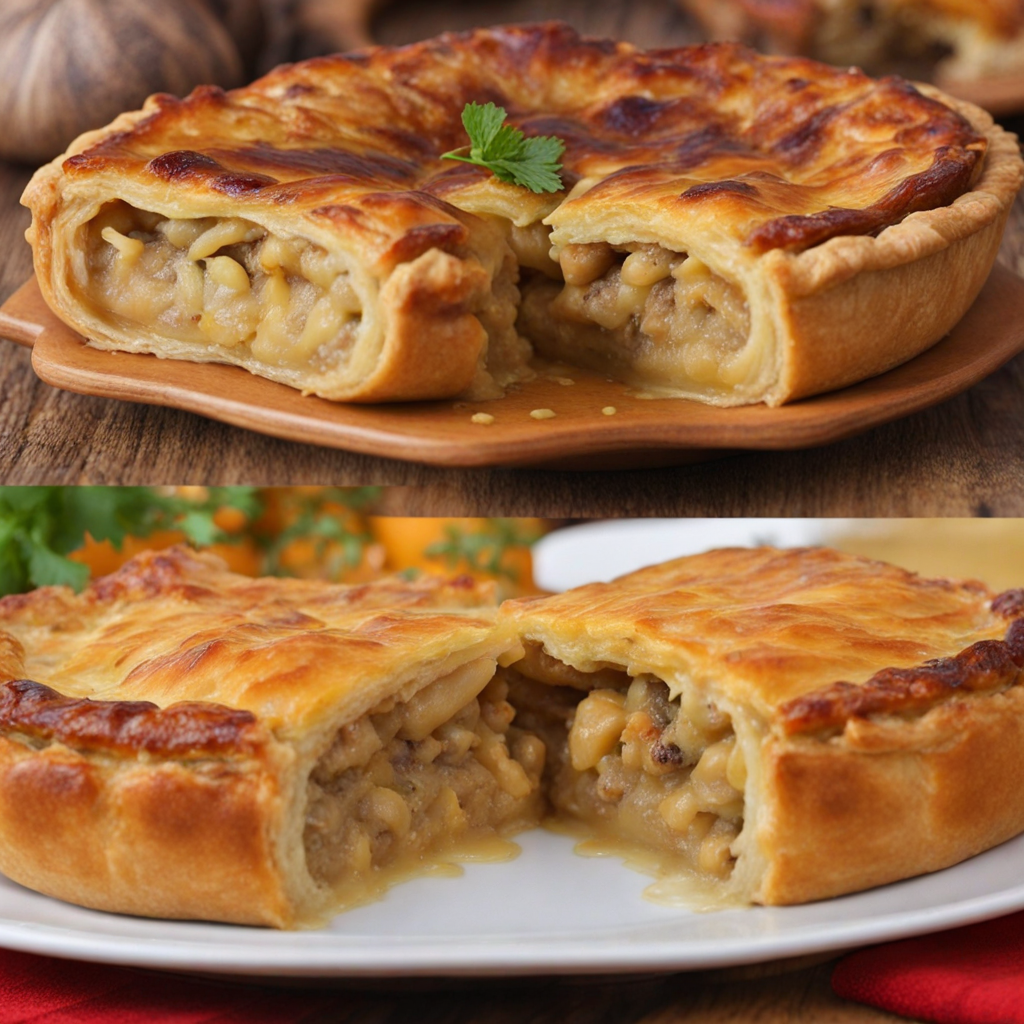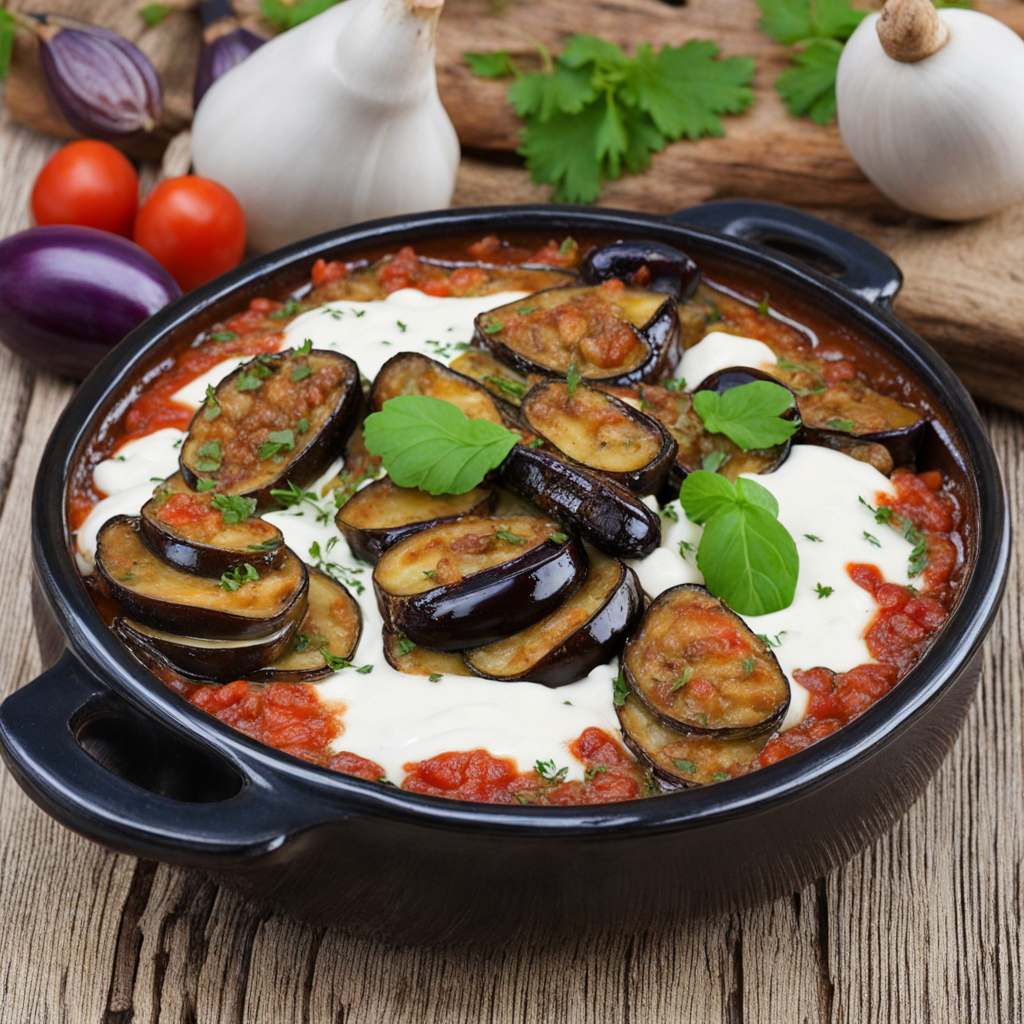Tavë Kosi
Tavë Kosi is a traditional Albanian dish that captivates with its unique blend of flavors and textures. At its core, this dish features tender pieces of lamb or beef, which are slow-cooked to perfection, allowing the meat to absorb the rich flavors of the accompanying ingredients. The heart of Tavë Kosi lies in its creamy yogurt sauce, made from fresh, tangy yogurt mixed with eggs and a hint of flour, which creates a luscious, velvety topping that bakes beautifully to a golden brown. The dish is often seasoned with aromatic herbs such as dill and mint, adding a layer of freshness that complements the richness of the meat and yogurt. The preparation of Tavë Kosi is a labor of love, often starting with marinating the meat to enhance its flavor before placing it in a baking dish. Once the meat is arranged, the yogurt mixture is poured over the top, enveloping it in a creamy embrace. As it bakes, the dish transforms into a comforting casserole that is both hearty and satisfying. The combination of the savory meat and the tangy, creamy topping creates a delightful contrast that is sure to please the palate of anyone eager to explore new culinary experiences. Serving Tavë Kosi is an experience in itself, often accompanied by fresh bread or a simple salad, making it a complete meal that can be enjoyed by family and friends. The dish not only reflects the rich culinary heritage of Albania but also evokes a sense of home and warmth, as it is commonly prepared for gatherings and special occasions. For those seeking to discover new tastes, Tavë Kosi offers a mesmerizing journey through the flavors of the Balkans, inviting you to savor each bite and appreciate the story woven into every ingredient.
How It Became This Dish
Tavë Kosi: A Culinary Jewel of Albania Albania, a land of rich heritage nestled in the Balkans, boasts a culinary landscape that is as diverse as its history. Among its most beloved dishes is Tavë Kosi, a savory baked lamb and rice dish enveloped in a creamy yogurt sauce. This dish is not only a staple of Albanian cuisine but also a cultural symbol that reflects the country's agricultural roots, historical influences, and evolving culinary practices. Origins and Historical Context The origins of Tavë Kosi can be traced back to the rural heartlands of Albania, where agriculture has historically shaped the lives and diets of its people. The dish's principal ingredients—lamb, rice, and yogurt—are staples that have been cultivated and raised in the region for centuries. The use of yogurt is particularly significant, as dairy farming has long been a vital aspect of Albanian pastoral life. It is believed that the tradition of using fermented milk products can be traced back to the ancient Illyrians, the ancestors of modern Albanians, who thrived in the region before Roman conquest. As Albania experienced various foreign influences over the centuries—from the Byzantine Empire to Ottoman rule—the culinary practices of the region evolved. The Ottomans, known for their sophisticated cuisine, introduced the concept of baked dishes and the intricate use of spices, which influenced the way Albanians prepared their food. Tavë Kosi likely emerged as a result of this culinary cross-pollination, combining traditional Albanian ingredients with techniques borrowed from Ottoman kitchens. Cultural Significance Tavë Kosi is more than just a dish; it is a representation of Albanian culture and hospitality. Traditionally, it is served during festive occasions and family gatherings, symbolizing unity and shared heritage. The preparation of Tavë Kosi often involves family cooperation—many Albanians cherish the moments spent cooking together, passing down recipes and stories from one generation to the next. The dish holds a particular place during major celebrations such as weddings, holidays, and religious festivals, where it serves as a centerpiece on the table. Its rich flavors and comforting aroma create a sense of nostalgia, evoking memories of home and familial bonds. Sharing Tavë Kosi among loved ones encapsulates the essence of Albanian hospitality, where food is an integral part of social interaction. Ingredients and Preparation The classic Tavë Kosi recipe includes tender pieces of lamb, which are marinated and then baked with rice and a sauce made from yogurt, eggs, and a hint of flour. The dish is often seasoned with salt, pepper, and sometimes a touch of garlic or other herbs, depending on regional variations and personal preferences. The yogurt mixture is poured over the lamb and rice before baking, creating a creamy, golden crust that contrasts beautifully with the tender meat beneath. The preparation of Tavë Kosi can vary significantly from region to region. In some areas, locals may add vegetables or spices to enhance the flavor, while others might opt for a simpler version that highlights the natural taste of the lamb and yogurt. This versatility showcases the adaptability of Albanian cuisine, allowing for variations that reflect local tastes and available ingredients. Development Over Time As Albania transitioned through the 20th century, its culinary practices began to modernize, and so did the preparation of Tavë Kosi. With the rise of urbanization and globalization, traditional recipes were sometimes altered to suit contemporary palates or cooking methods. The advent of convenience foods and pre-packaged ingredients led to a shift in how home cooks approached this beloved dish. Despite these changes, many Albanians remained committed to preserving their culinary heritage. In recent years, there has been a resurgence of interest in traditional cooking, driven by a growing appreciation for authentic flavors and home-cooked meals. Culinary tourism in Albania has also played a role in revitalizing interest in dishes like Tavë Kosi, as visitors seek to experience the country's rich culinary landscape firsthand. In modern Albanian households, Tavë Kosi continues to be a cherished recipe, often prepared during family gatherings or special occasions. Chefs in restaurants across the country have also embraced the dish, experimenting with innovative presentations while honoring its traditional roots. This balance of old and new reflects a broader trend in Albanian cuisine, where chefs are eager to showcase the nation's culinary heritage while appealing to contemporary tastes. The Global Influence of Tavë Kosi As the Albanian diaspora has spread across the globe, Tavë Kosi has found its way into the hearts and kitchens of many expatriates. Albanian communities in countries such as the United States, Canada, and Western Europe have embraced their culinary heritage, sharing recipes and hosting gatherings that celebrate traditional dishes. In these settings, Tavë Kosi serves as a bridge between generations, connecting younger Albanians with their roots while introducing the flavors of their homeland to new audiences. Moreover, the growing interest in Balkan cuisine has led to increased visibility for Tavë Kosi beyond Albanian borders. Food enthusiasts and chefs worldwide are beginning to recognize the unique flavors and cultural significance of Albanian dishes, with Tavë Kosi often highlighted as a quintessential representation of the region's culinary identity. Conclusion Tavë Kosi exemplifies the rich tapestry of Albanian culinary history, woven together by centuries of agricultural tradition, cultural exchange, and familial bonds. As a dish that transcends mere sustenance, it embodies the spirit of Albanian hospitality and the importance of food in cultural expression. From its humble origins to its modern adaptations, Tavë Kosi stands as a testament to the resilience of tradition in an ever-evolving world. Today, it continues to bring people together, fostering connections through shared meals and cherished memories—an enduring symbol of the heart and soul of Albania.
You may like
Discover local flavors from Albania


